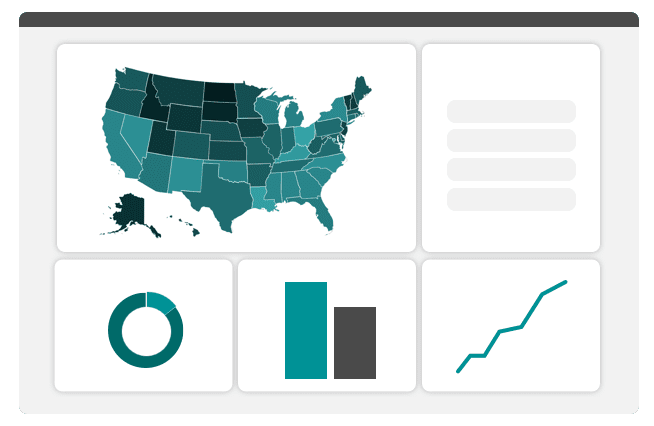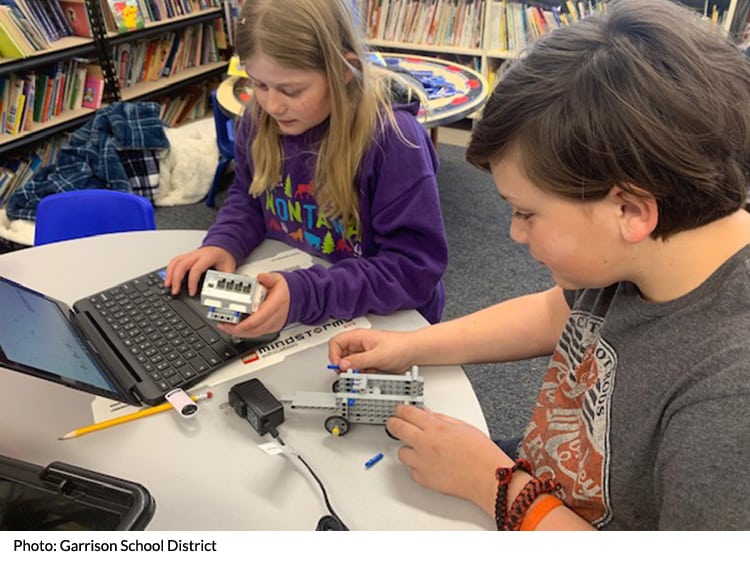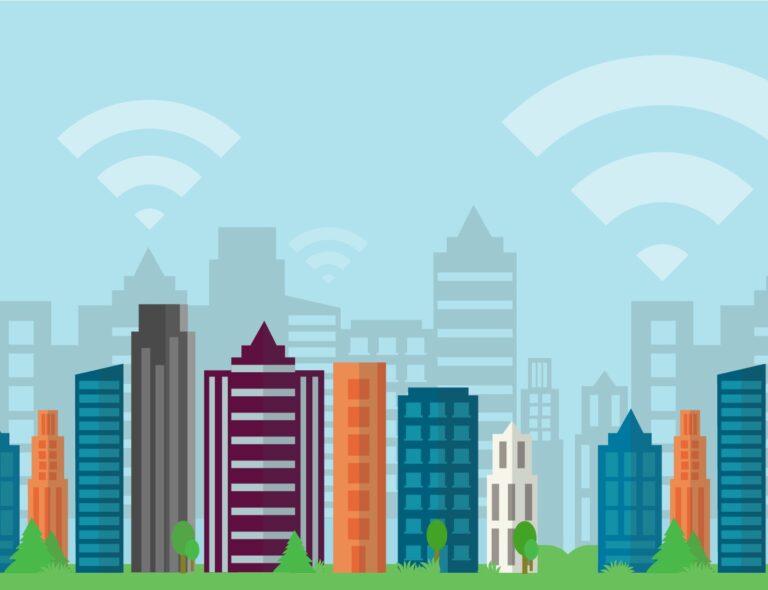About an hour outside of Missoula, Montana is Garrison, a small ranching town that is home to about 300 people. The local school serves just 18 students in kindergarten through sixth grade. With multiple grade levels in each classroom and only three full-time staff members, access to the Internet is critical to providing individualized instruction, distance learning opportunities, and digital equity for students and staff.
The Challenge
Prior to the 2017-2018 school year, the school received a fixed amount of Internet access every month. When the data ran out – which typically happened two weeks into every month – the supervising teacher Debra Crow often found herself traveling to a McDonald’s, 12 miles from the school. There, she could use the restaurant’s free Wi-Fi to file state reports from her phone. “I had no other options,” Ms. Crow said.
The inconvenience was even worse for her pupils. Students recalled sharing one computer that (most of the time) was too old to keep pace with the latest apps. When it came time to administer Montana’s standardized online test, students traveled to Deer Lodge to use the high school’s computers and Internet connection. Since students had such limited time working with computers in their local school, they struggled when they had access to shared resources.
“They didn’t even know how to make a capital letter on the keyboard,” Ms. Crow remembered. “They were at such a disadvantage it was painful.”
Gathering Stakeholders: Community, Providers, and School Board Members
Garrison’s two teachers realized that if they didn’t invest in their network, they would continue to put their students at a disadvantage in the long run. They created a community survey to obtain the necessary financial information to receive an E-rate discount and released a Form 470 and RFP requesting increased bandwidth. A new provider proposed a satellite solution that would increase their bandwidth by five times and keep their monthly cost the same.
Next, they shared their vision for educational technology with their local school board. This was critical because the board was wary of technology in the classroom. The teachers explained their students were entering high school unprepared and embarrassed because they didn’t know how to use computers. In a place where most of the homes also lacked Internet access, it was imperative that Garrison School filled that gap. When the school board realized equitable access to the Internet meant equitable access to educational opportunity, they jumped on board with the teachers’ vision.
Digital Equity: Not Just a Dream, a Reality
Garrison’s upgraded satellite connection provides 25 Mbps of Internet access and does not have a monthly limit. This level of access puts them in the 38% percent of districts nationwide that meet the SETDA/FCC long-term goal of 1Mbps per student – the bandwidth needed for media-rich learning.
What does 1 Mbps per student mean in practice? It means one device is available for each student. It means Garrison can host coding hours on Code.org, use free online resources through the Montana Library2Go, and personalize lessons on Khan Academy. It also means the school can finally open its robotics lab this coming year. But equitable access has an emotional component, too. One student cried when she saw her computer for the first time. She later used it to research and write a report on bunnies, her favorite animal. Another student described how access to technology allowed him to research topics he was interested in and share that research by creating his own website. “I made mine about sports,” mentioned one student.
Although students and teachers still visit the McDonald’s, it’s no longer just for Wi-Fi. This year, the whole school took a field trip there to celebrate the students’ research reports. When the students knew more than the employees about the history of the restaurant thanks to their excellent research, the teachers knew they had made the right investment for their students. Working to ensure your students have equitable access to the Internet? Visit our Tools & Resources to explore how to get started.
This blog post was jointly written by the Rural Schools Collaborative and EducationSuperHighway. Learn more about our work together.






